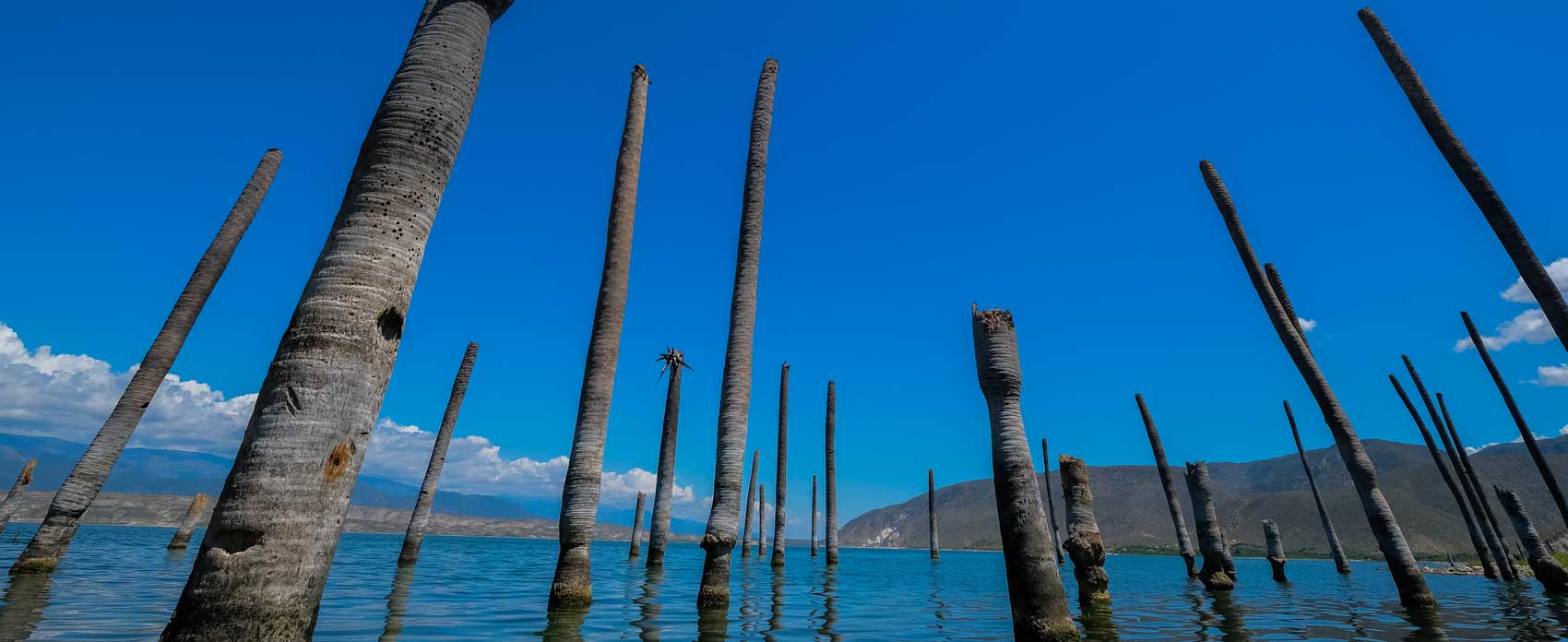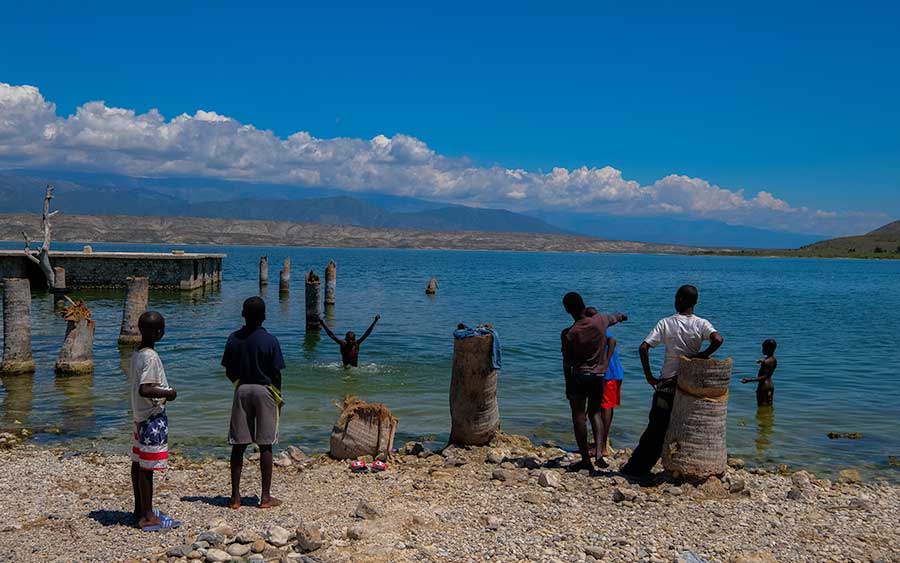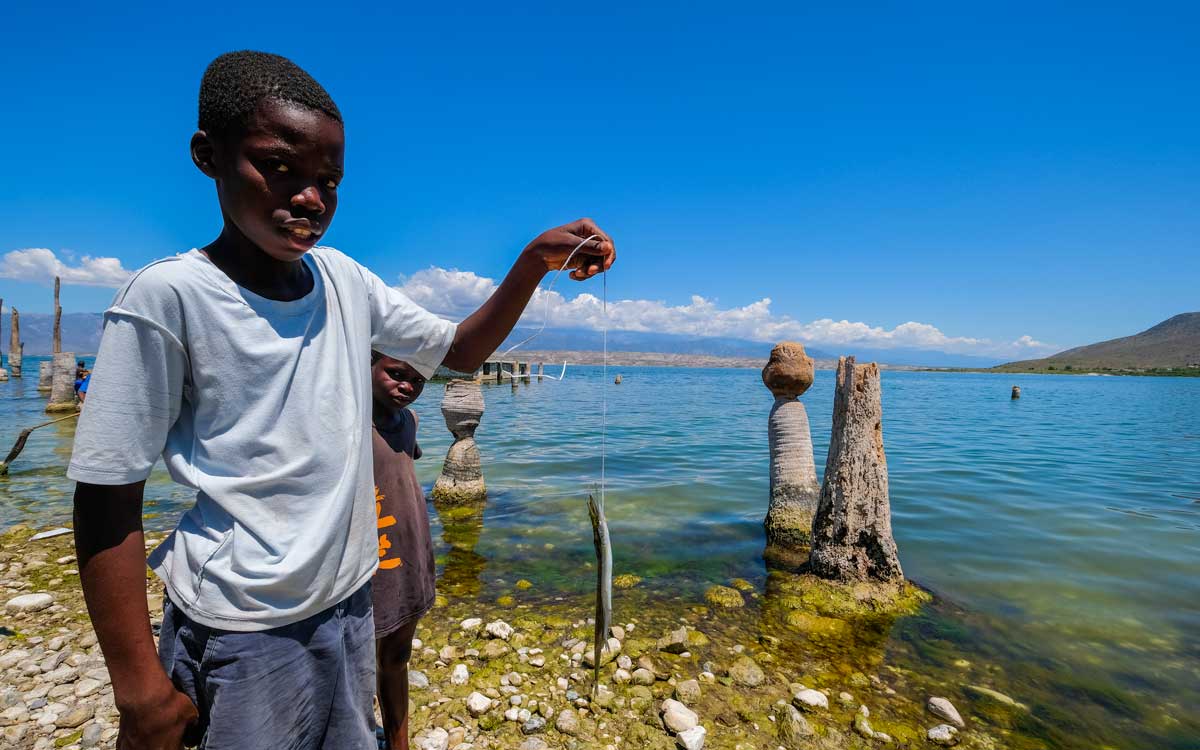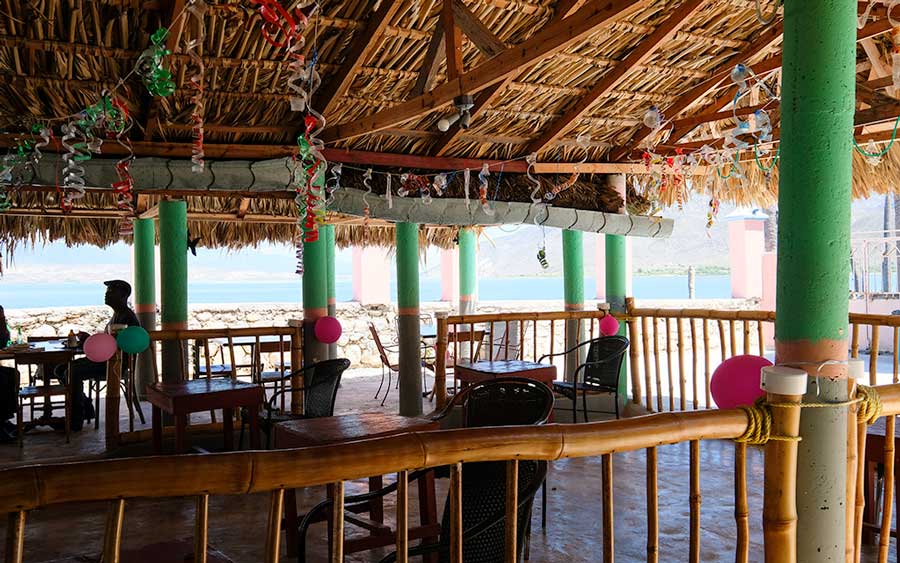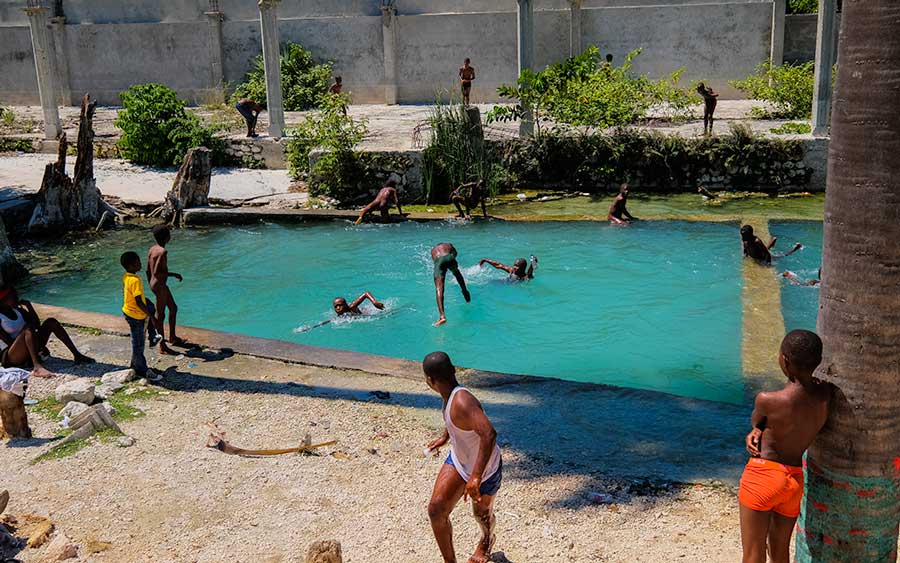
Photo: René Durocher
Check out These 10 Amazing Haitian Birds
Did you know that you’ll see more Caribbean birds in Haiti than (almost) anywhere else? Which of these ten amazing Haitian birds have you seen?
Haiti is one of the Caribbean’s prime birdlife hotspots. Of the Caribbean’s 175 endemic species, 49 can be found in Haiti – the second-largest concentration of any nation in the Caribbean. Only Cuba, with 50, has more Caribbean birds on show. Haiti is also home to 28 species endemic to Hispaniola – more than any other island in the Caribbean. Birdlife International recognises ten ‘Important Bird and Biodiversity Areas’ in Haiti, and one Endemic Bird Area. Want to know more about Haiti’s wildlife? Read our list of Haiti’s most interesting animals here.
Here are ten Haitian birds to look out for on your birding adventure

Photo: René Durocher
01. Wanga Negès
A relatively common hummingbird, Wanga Negès (or the Antillean Mango) is one of the most popular birds on the island, and is culturally important. Often found around beaches and in mountains of up to 2,500 m of altitude, this bird functions like other hummingbirds with a very large bill compared to its body, which is the reason behind it’s characteristic extremely fast flapping. The Wanga Negès is found throughout Hispaniola (both Haiti and the Dominican Republic).

Photo: René Durocher
02. Ti Seren
Also known as the Antillean Siskin, the Ti Seren is a small finch. Males are recognizable by their distinctive yellow body, black hood, yellow bill and yellow-green back. Females are less striking, with striped or spotted yellow-green head, back and wings, and pale yellow belly. They are most commonly found in and near forest-like environments, especially pine forest at altitudes between 1600 and 9800 feet. The Ti Seren is endemic to Hispaniola.

Photo: René Durocher
03. Ti Kòk
This bird is known in Haiti as Ti Kòk (which translates to small rooster). Also known as the Greater Antillean Bullfinch, it is mostly found in Caribbean islands such as Hispaniola, Jamaica, Bahamas and the Turks and Caicos Island. The Ti Kòk is recognizable by the vivid orange-red eyebrows, throat and vent which stand out against a stark black body. It eats grains, fruits, flower petals and even molluscs.

Photo: René Durocher
04. Bannann Mi Fran
Another endemic, the Bannann Mi Fran or Hispaniolan Oriole is a species of icterid or “New World Blackbird”, a little smaller than the (unrelated) North American common blackbird at 20 to 22 centimeters. Like the Greater Antillean Bullfinch, this slender bird is black overall, with distinctive yellow patches on its shoulders, rump, and under-tail coverts. It has been reported that while they are endemic to Hispaniola, they also live on nearby islands like La Gonâve, La Tortue and Île-à-Vache. They can be found in dry forests; however, they seem to prefer palm trees alongside banana trees (hence its Kreyòl name).

Photo: René Durocher
05. Mèl Dyab
The Greater Antillean Grackle – or Mèl Dyab in Kreyòl – is a very social bird, endemic to the Greater Antilles meaning Cuba, Jamaica, Hispaniola (Haiti and Dominican Republic), Puerto Rico and occasionally the Caymans. It is often found near human habitation and is therefore a great, accessible bird if you’re looking for an easy species to tick off your checklist. This black bird with a long tail and beak is described as gregarious and noisy.

Photo: René Durocher
06. Ti Tchit Kou Jòn
The Cape May Warbler or Titchit Kou Jòn is a migrating bird common to the Antilles. Common throughout Haiti, you’ll find it in forest-like habitats, where it winters. It hunts insects, sips nectar and eats fruits. The Kreyòl name “Ti Tchit Kou Jòn” is indicative of its most interesting feature – its yellow-colored neck (Kou Jòn). Adult males usually have a richer yellow color while females of this kind lack the vivid yellow and are more often found with a yellowish-green rump.

Photo: René Durocher
07. Kat-je Tét Nwa
The Black-crowned palm tanager is a common endemic bird spread throughout the Haitian territory. You’ll find it in all sorts of places such as desert-like arid areas, pine forests and even beaches. A beautiful tricolor, the Black-crowned palm tanager has a black face and crown, contrasting white spots on the face and a completely white throat, and yellow-green wings. The Kat-je Tèt Nwa primarily eats fruits but also grains and insects.

Photo: René Durocher
08. Ti Kit Fal Jòn
Similar to the Black-crowned Palm Tanager, the Yellow Throated Warbler is a colorful bird, with, as the Kreyòl name suggests, a yellow throat, a black face and white eyebrows. They are small birds, usually found hunting insects in pine forests. The Yellow Throated Warbler hops along tree branches and can even cling to Spanish moss while it hunts for food.

Photo: René Durocher
09. Kolibri Mòn, Chikorèt
The endemic Narrow-billed Tody is a very popular bird in Haitian culture, yet potentially faces extinction because of habitat loss. Its narrow beak, red throat and sides, and vivid green upperparts make it a remarkable bird to observe. This species likes higher, wetter woodlands, and so can be found in forested mountains and coffee plantations.

Photo: René Durocher
10. Kanson Wouj
The endemic Kanson Wouj or the Hispaniolan Trogon one of only two Trogon found in the Caribbean. Its red belly, emerald back and black head, with contrasting orange eyes and yellow bill, makes it one of Haiti’s most colorful birds. The Kanson Wouj is named after the bird’s red belly. Usually found in mountains, but occasionally in mangrove swamps.
Written by Kira Paulemon.
Published February 2021.
Explore more of Haiti’s Wildlife & Nature

Paradise for your inbox
Your monthly ticket to Haiti awaits! Get first-hand travel tips, the latest news, and inspiring stories delivered straight to your inbox—no spam, just paradise.




